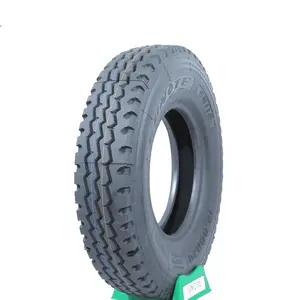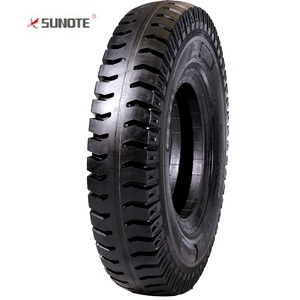
All categories
Featured selections
Trade Assurance
Buyer Central
Help Center
Get the app
Become a supplier

(38951 products available)






























Rib lug pattern bias tire is a popular choice for many vehicles due to its unique construction and benefits. It has an internal ply construction of crisscrossing cords made of polyester, nylon, or other materials. This unique construction provides the tire with flexibility, strength, and stability.
Rib lug pattern bias tires are very popular and come in different types. Here are some of the common types of rib lug pattern bias tires:
In addition, rib lug pattern bias tires are manufactured in various sizes and specifications to meet specific vehicle requirements and operating conditions. Common designations include 6.00-16, 7.00-15, and 8.25-20, indicating the tire's width and aspect ratio and rim diameter. The specific size and tread pattern of rib lug pattern bias tires may vary depending on the manufacturer.
Bias ply tires have two or more plies of cord that are crisscrossed diagonally between the beads, and they extend from bead to bead. They are constructed of polyester, nylon, or rayon. The bias lug tire is found in many road and off-road applications. A bias lug tire is made to be used on soft to hard terrain. Rib lug pattern bias tires are manufactured with a combination of rib and lug tread patterns. Rib patterns offer low rolling resistance and excellent on-road performance. At the same time, lug patterns provide traction and grip in off-road conditions.
The specification of rib lug pattern bias tire varies depending on the manufacturer and intended use. Here are some common specifications:
Tire size
Tire size is an important specification. Size affects the ride quality, handling, and traction. Rib lug pattern bias tires are available in different sizes, which makes them suitable for various vehicles and applications. The tire width, aspect ratio, and diameter are included in the tire size. For example, a bias tire with a size designation of 175/70R13 has a width of 175 millimeters, an aspect ratio of 70 percent, and a diameter of 13 inches.
Load index and speed rating
The load index indicates the maximum load that the bias tire can carry. The speed rating indicates the maximum speed the rib lug pattern bias tire can perform without damage. Bias tires with a load index of 75 to 100 and speed rating of B to D are common.
Tread depth and pattern
Tread depth and pattern are important in determining the bias tire's performance in various conditions. Rib lug pattern bias tires have moderate tread depths of 8 to 10 millimeters. The rib and lug patterns provide a combination of on-road and off-road capabilities.
Construction type
The construction type of rib lug pattern bias tires is bias ply construction. Bias ply construction offers durability and puncture resistance, making the tires suitable for off-road applications.
Material composition
Rib lug pattern bias tires are manufactured with rubber compounds that offer a balance of traction, durability, and wear resistance. The tires also feature steel or textile-reinforced sidewalls for added strength and stability.
Proper rib lug pattern bias tire maintenance is crucial for optimal performance and longevity. Here are some general maintenance tips:
Visual inspection
Rib lug pattern bias tires should be visually inspected regularly. Look for signs of damage, wear, and foreign objects. Check for uneven tread wear, tears, cracks, and bulges. Ensure there are no embedded stones or sharp objects lodged in the tread.
Tread depth measurement
The tread depth of rib lug pattern bias tires should be measured using a tread depth gauge. The measurement helps determine the level of tire wear. If the tires are worn out, they should be replaced to maintain traction and safety.
Cleaning
The rib lug pattern bias tires should be cleaned regularly to remove dirt, mud, and debris. A stiff brush and mild soap solution are used to clean the tires. Cleaning removes debris and dirt, prolonging the life of the tires.
Proper storage
If the rib lug pattern bias tires are not in use, they should be stored in a cool, dry, and dark place, away from direct sunlight and heat sources. The proper storage maintains the rubber's integrity and performance.
Regular rotation
The rib lug pattern bias tires should be rotated every 5000 to 10000 kilometers. Tire rotation promotes even wear and maximizes traction. The front and rear tires are exchanged to ensure all tires wear out evenly.
Inflation pressure
Check the inflation pressure of rib lug pattern bias tires. The tires should be inflated to the manufacturer's recommended pressure. Proper inflation ensures even contact with the ground, improves fuel efficiency, and reduces tire wear.
Choosing the right rib lug pattern bias tire for specific needs and preferences can be a complex process. Here are some of the factors that can influence the choice:
Most bias-ply tires can be replaced with the proper tools and equipment. Only some of the tools needed to change a rib lug pattern bias tire are listed below.
Here's a step-by-step guide on how to replace a rib lug pattern bias tire:
Q1. Are rib lug pattern bias tires good in mud?
A1. Yes, rib lug pattern bias tires are suitable for muddy terrains. Their tread design, featuring lugs and ribs, provides a balance of traction and self-cleaning capabilities. The raised lugs offer grip in mud, while the ribbed sections help clear debris. However, for extremely deep mud, specialized mud-terrain tires may perform better.
Q2. What is the difference between bias and radial tires?
A2. Bias tires have layers of carcass plies that crisscross at a 30 to 40-degree angle, forming a diamond shape. They are more durable and puncture-resistant, making them suitable for off-road and rugged terrains. Bias tires also have less flexibility, resulting in a rougher ride and slower speed. Bias tires do not have deep tread patterns and are less self-cleaning.
Q3. Can rib lug pattern bias tires be used on electric vehicles (EVs)?
A3. Yes, rib lug pattern bias tires can be used on electric vehicles, especially on EVs designed for off-road or rural environments. The bias tires' durability and puncture resistance can benefit the EV in challenging terrains. However, it's essential to check the tire size and specifications to ensure compatibility with the EV model.
Q4. How long do rib lug pattern bias tires last?
A4. The lifespan of rib lug pattern bias tires can vary based on several factors, including driving conditions, load, maintenance, and tire quality. Generally, bias tires have a longer wear life than radial tires. Bias tires can last for 20,000 to 40,000 miles (32,000 to 64,000 kilometers) or more. Regularly checking and maintaining proper inflation, alignment, and tread depth can help maximize tire life.
Q5. Can rib lug pattern bias tires be retreaded?
A5. Yes, rib lug pattern bias tires can be retreaded. Retreading can extend the tires' service life and be more cost-effective than buying new tires. The process involves removing the worn tread and applying a new tread rubber. However, ensure that the bias tires are suitable for retreading and that the process is performed by a reputable and certified tire retreading company.